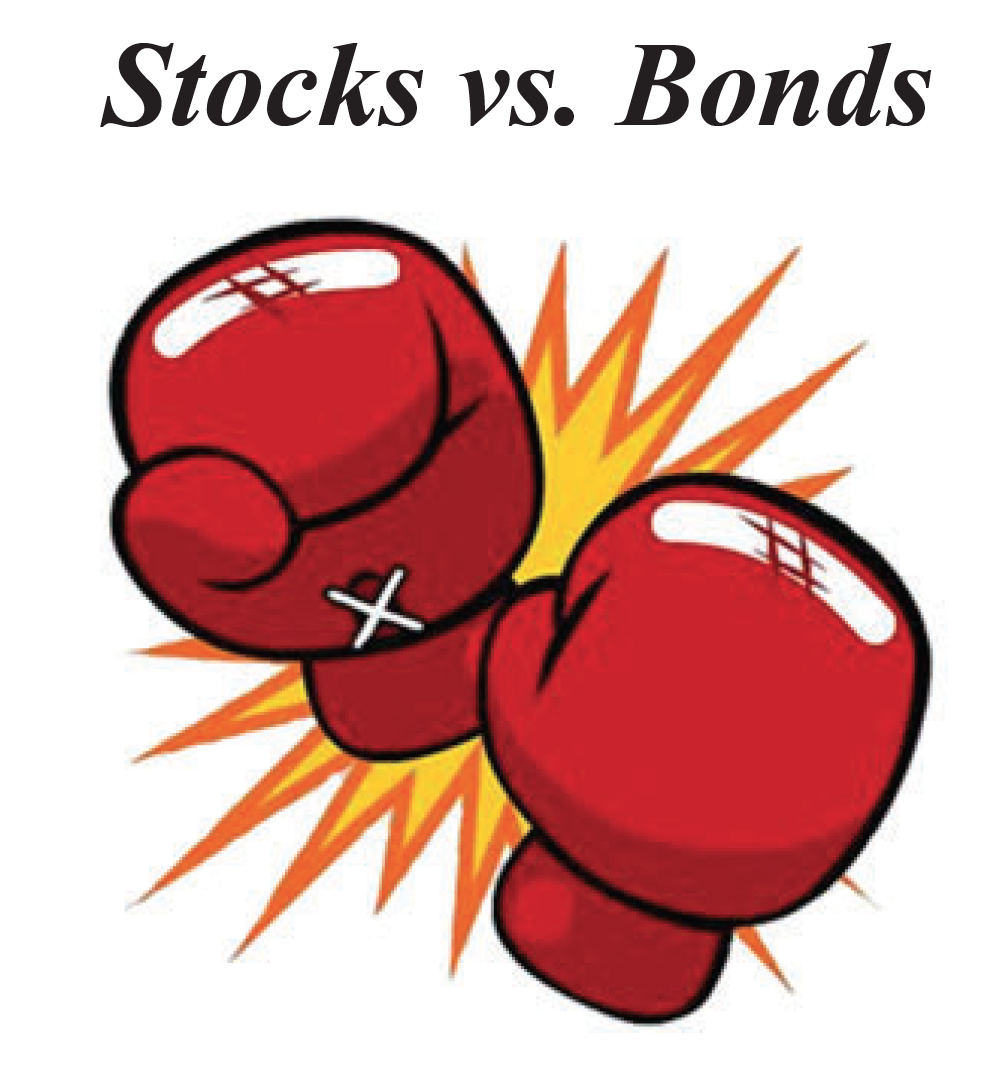by Brooke Thackray, Alphamountain Investments
Market Update
There ain’t no good guy, there ain’t no bad guy
There is only you and me and we just disagree
“We Just Disagree” — Dave Mason (song, circa 1977)
 Right now, the bond market and stock market disagree with each other. The stock market is reacting to a growing economy and higher inflation expectations. The bond market is not buying into the narrative. Either it believes that economic growth is not forthcoming to the degree that stock investors believe, or that inflation will not rise as expected, or that both scenarios are plausible.
Right now, the bond market and stock market disagree with each other. The stock market is reacting to a growing economy and higher inflation expectations. The bond market is not buying into the narrative. Either it believes that economic growth is not forthcoming to the degree that stock investors believe, or that inflation will not rise as expected, or that both scenarios are plausible.
The stock market has been moving higher over the last few months, in contrast, the yield on the 10 Year Treasury Note has been moving lower since the end of March. The stock market has been propelled higher by the narrative of the reflationary trade and as a result, the cyclical sectors of the stock market are benefitting.
So, is the stock market right or the bond market? Most of the time, although not all of the time, it is the bond market that is right. In April and May, the yield on the US Treasury 10 Year Note decreased while the S&P 500 moved higher (see graph below).
The bond market and stock market do not always have an inverse correlation. In the summer of 2020, yields headed lower while the stock market headed higher (see graph below). At the time the Federal Reserve was introducing huge amounts of liquidity into the markets to keep interest rates low, which helped to provide the narrative of cheaper money to fuel a rising stock market.
There is a strong argument that interest rates are being held artificially low by the Federal Reserve and therefore it is difficult to make a comparison between the stock market and the bond market. There is a lot of truth in this statement. Currently, the Federal Reserve is buying $120 billion of securities every month ($80 billion in treasuries and $40 billion in mortgage backed securities).
The graph above from Nordea suggests that either the yield on the 10 year Treasury Note is too low compared to historical norms versus the Core CPI, or the Core CPI is too high. If you believe that infl ation is transitory, then it is easy to argue that when the inflation rate settles down, the US 10 Year Treasury Note yield will be in line with historical norms and vice versa.
At the current time, the Federal Reserve has stated that they want to maintain their buying rate of $120 billion of securities a month. It is going to be difficult for the Federal Reserve to justify an increase in this amount, and it is not expected by the markets. Despite other central banks around the world starting to talk about tapering their purchases, the Federal Reserve keeps committing to its buying plan. Nevertheless, if economic numbers come in stronger than expected, and/or unemployment improve, the market may start to anticipate that the Federal Reserve could start tapering at an earlier date than previously expected.
Despite the arguments for continued inflation and economic growth, investors need to pay more attention to what the bond market is indicating about the future. Bond investors are not indicating that inflation will never be a problem and that the economy will not grow. Their position is that in the short-term to medium term, inflation expectations are too high and growth expectations too strong. In other words, inflation expectations and the stock market have gotten ahead of themselves. Given that when the bond market and stock market disagree, the bond market is usually the one that is right, investors would be wise to pay attention to what the bond market is communicating.
Correlation shows that either bond yields and thestock market are probably moving higher together, or they are both moving lower together in the near term
The correlation between bond yields and stock price movement changes over time, and is somewhat dependent on the stage of the economic cycle at the time. Bond yields typically increase when the economy is shifting from a slowing economy to a rapidly expanding economy.
Late in the economic cycle, bond yields tend to head lower as investors holding long-term bonds anticipate a slowing economy. Stocks will often continue to rise, but then turn lower and follow bond yields lower. The exception to this is in an inflationary environment when bond yields continue to head higher as the stock market heads higher. At this late stage in the economic cycle, the central banks are typically raising rates to cool inflation. In this scenario, stocks often head lower before bond yields.
There are ebbs and flow in the relationship between the stock market and bond yields. In the graph below, I illustrate the relationship between the yield on the 10 Year US Treasury Note and the S&P 500. I have used a 22 trading day correlation graph (bottom panel), which shows the correlation on a one-month rolling basis.
The graph shows that in the short-term the yield and the stock market direction cycle back and forth between being highly correlated (moving in the same direction) and being highly inversely correlated (moving in the opposite direction). A value above zero, shows a positive correlation and below zero, a negative correlation. I am using the level of 0.75 as highly correlated and -0.75 as highly negatively correlated.
If you look at the graph it is easy to see that when there is a high correlation, the trend can remain at the upper band for a few weeks before turning lower. For example, the high correlation around October 2019 was persistent.
In contrast, when the correlation is highly negative, the condition does not last long, as can be seen with the “v” shaped bottoms. We are potentially at one of the bottoms with the correlation factor of -0.80.
If yields start to correlate to stock prices, either stock prices continue to rise and yields rise at the same time, or both stocks and yields fall together.
The reflation trade investors would say that interest rates will turn higher. The weaker than expected May Nonfarm Payroll report released last Friday with only 556 thousand jobs being created would suggest that both yields and the stock market could head lower.
The raging debate in the markets is whether we are in a bout of transitory inflation or persistent inflation. If we are in a situation of persistent inflation, it is more likely that interest rates will rise. If inflation is transitory (at least for now), this increases the chances of interest rates declining.
Where does seasonality fall within this debate? Seasonality supports the trend of lower interest rates over the next few months. Government bonds tend to perform well from May 6 to October 3, particularly in August and September (Thackray’s 2021 Investor’s Guide, page 47). In addition, inflation expectations tend to fall from early May to late September (Thackray’s 2021 Investor’s Guide, page 149). Seasonality does not guarantee success, but it does help indicate supportive trends.
The current market is in a similar situation compared to 1987 and 2007-2008
The current situation with commodities performing well into a possible market top is very similar to 1987. There are some differences of course, including the level of interest rates. Nevertheless, back in 1987 inflation was heading higher and commodities were on fire. The resource stocks of the time were outperforming. In August 1987, the stock market started to stumble under its own weight and then corrected sharply in October. It is possible that we could see some sort of similar outcome with the stock market topping out sometime in the next few months.
The stock market analogue of 2007-2008, could also provide some insight into what may lay ahead. The S&P 500 started to turn lower in late 2007. At the same time, the CRB Index continued higher into the beginning of July 2008, before correcting sharply. The CRB Index is heavily weighted with oil, which reached a lofty value in the $140’s in July 2008.
In both 1987 and 2007-2008, commodities outperformed the S&P 500 into the top of the market. Currently, we are seeing the commodity and cyclical sectors outperforming. It is possible that the S&P 500 is in a topping pattern even as the cyclical sectors continue to perform well. I am planning on writing about this more over the next few months. Today’s situation has some similarities.
Lumber - Trees don’t climb to the sky
Last month, I included a graph of lumber and prognosticated that the price was set to fall. I included a pic of a lumberjack poised to strike down the rising price of lumber. It was fortuitous that the lumber price corrected sharply a few days later. Although the price corrected, it is still in an upward trend and slightly above its 50 day moving average.
The price of lumber is ultimately set by supply and demand. As sawmills ramp up their production, supply is increasing. As plywood is being imported from China, supply is increasing. This will put downward pressure on the price of lumber.
As I have mentioned in the past, lumber is often a sentiment indicator, for the homebuilders sector and the overall stock market. Keep an eye on the price of lumber, it could give us some clues on the market direction. A continuing fall in the price of lumber would indicate an increasing probability of the stock market heading lower.
On a seasonal basis
Currently, the S&P 500 is just below where it was over a month ago. The first few days of June have been positive, which on average over the long-term is not out of the norm. The stock market, on a seasonal basis, for most of the remainder of June, on average tends to have lackluster performance and even slightly negative performance.
The good news is that a correction in June can actually lead to a good buying opportunity for the broad stock market towards the end of June. On average, over the long-term the S&P 500 has rallied in the last couple of days in June, to approximately July 18. This rally is largely the result of investors pushing up the stock market ahead of the Q2 earnings season (Thackray’s 2021 Investor’s Guide).
Read the complete Thackray Letter – June 2021 below:
Copyright © Brooke Thackray















